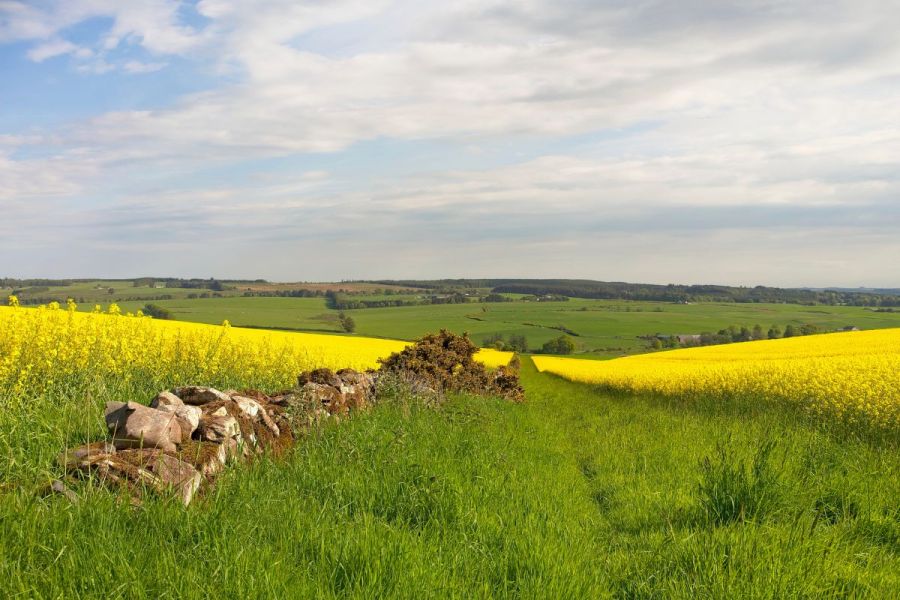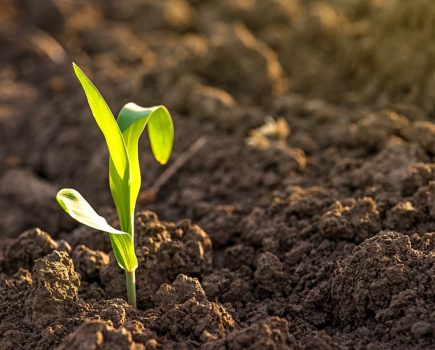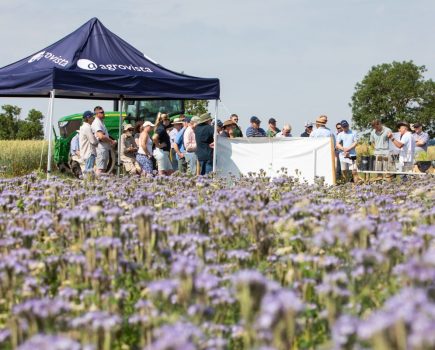Widening the crop rotation has been a vital tool for one farm manager in his drive to make the land both more productive and sustainable. CPM speaks to him to dig into the details.
“We’ll continue to work to improve our soils and become less reliant on artificial inputs.”
By Melanie Jenkins
Becoming farm manager will always be a sizeable task, but doing so on a farm at one of the largest estates in Britain with the aim of turning the focus of the business around entirely, is a different challenge altogether.
But Chris Lovie has embraced this with both hands to drive sustainability at Dunecht Home Farms, which is part of Dunecht Estates in the North East of Scotland. Chris manages 6000ha in total, with 700ha of cropping grown around Dunecht, consisting of a mix of wheat, spring barley, winter barley, oats and oilseed rape, as well a running 100 cows and 300 ewes on the low ground and 2500 ewes on hill ground.
When he took on the management of the farm in March 2019, there were a number of challenges to overcome to improve cropping, sustainability, soil health and the commercial potential of the cash crops.
One such challenge was that cropping had been kept in a very tight crop rotation under the previous management. To widen the rotation, Chris has shifted from a 3-4 year cycle to up to eight years with cereal crops. “The rotation was just too tight so we’ve increased the arable area on the farm by taking out grass,” he explains.
By broadening the rotation, this has allowed him to expand the hectarage of OSR he’s growing while using winter barley as an entry to it. Although the farm doesn’t have a significant problem with cabbage stem flea beetle, the pest was present in OSR in 2022, but luckily the weather usually kills it off when it does appear, says Chris.
Winter oats are also now grown as a break crop for winter wheat to help extend the rotation. “We grow 200ha of wheat and it just wasn’t possible to maintain this with a short rotation,” he adds. “As well as being able to grow the crops we want to, we’re finding crops are now a lot cleaner with fewer weeds that are easier to control, disease pressure is much lower and soil structure has improved.”
When Chris joined the farm there was a significant issue with sterile brome that he’s since worked to get on top of with the help of Charlie Catto, Agrii agronomist. Before Charlie came on board, the same fields were used for the same three-year rotation – with spring crops cycling with grass in some and others always planted with winter wheat, winter barley and OSR. This meant there was never a break.
Farm-saved seed was used but brome seed wasn’t removed, leading it to multiply across the farm, explains Charlie. “The herbicide programme being used wasn’t really tackling the brome, instead it was aimed at annual meadow grass.”
Widening the rotation and moving fields into a mix of winter and spring cropping helped to tackle this, he explains. “We also bought new seed which was brome free and looked at using different cultivations such as ploughing deeper and not reinverting at the headlands, as well as using herbicides based on flufenacet and Avadex Factor (tri-allate). It’s been a combination of integrated pest management and agronomy to achieve control of the weed.”
A further benefit of widening the rotation and shifting between winter and spring cropping in all fields has surfaced in the form of increased organic matter and better crops, he says.
However, one approach that remains set on farm is the use of the plough, despite attempts to venture into minimum tillage. “Compactions was pretty bad on the farm with headlands set like concrete. We’ve removed a lot of the pans and the compaction issues through different cultivations which has helped to bring up the yield average,” explains Charlie.
But when trialling min-till the drop in yield was too significant to justify continuing with this approach, says Chris. “We now tailor our approach to the situation, for example we have a Simba cultivator with a deep leg that’s useful on headlands, but a Horsch Pronto DC is the main drill. The ground can be quite wet in the winter so we have to be careful how we broach the soil structure as it has to have a good north-east wind to dry out.”
Chris has utilised green manure cover crops to help open up soil structure, add in organic matter and as a good entry for wheat. These are supported through government schemes – something the business had in place before Chris joined, but which he’s further tailored to suit the farm by directing them at less fertile ground.
Turning his attention to further improving soil health, Chris has adopted a practice of regular sampling to look at pH, phosphate, potash, magnesium and organic carbon levels. “This is something we’re constantly trying to improve and so have created soil maps and are soil sampling as well as applying lime every five years to ensure the target pH of 6.5 is met and never falls below 6.”
He also uses soil and tissue analysis to determine where macro- and micronutrients should be applied to best benefit crops, such as magnesium, sulphur, manganese, zinc, boron and copper.
The loamy soils on the farm have a high stone content but also have a high level of organic matter, ranging between 5-7%. “The farm has had constant applications of muck during the years, and I’ve stopped selling straw straight off the back of the combine and either arrange straw for muck deals or I chop it. I’ve also introduced the use of digestate to the farm to try and constantly improve organic matter.”
A notable improvement that Charlie’s observed where muck or digestate have been applied is when the farm has a really dry or an extremely wet summer, with these areas coping much better. “This has improved both the durability of the soil and the crops.”
A further change Chris has implemented has involved moving to liquid fertiliser to improve application. “We’re now applying a lot less P and K and when we combination drill, the rates of fertiliser used have almost halved compared with what they were previously because of our soil indexes. But going forward I’d like to bring in variable nitrogen and seed rates to achieve the best out of what we’re applying.”
In the long term, Chris feels some uncertainty around the subsidy outlook in Scotland, which doesn’t have the Sustainable Farming Incentive (SFI). “Until we hear a clearer message from the Scottish Government, we’ll continue to work to improve our soils and become less reliant on artificial inputs.”
This article was taken from the latest issue of CPM. Read the article in full here.
For more articles like this, subscribe here.
Sign up for Crop Production Magazine’s FREE e-newsletter here.




